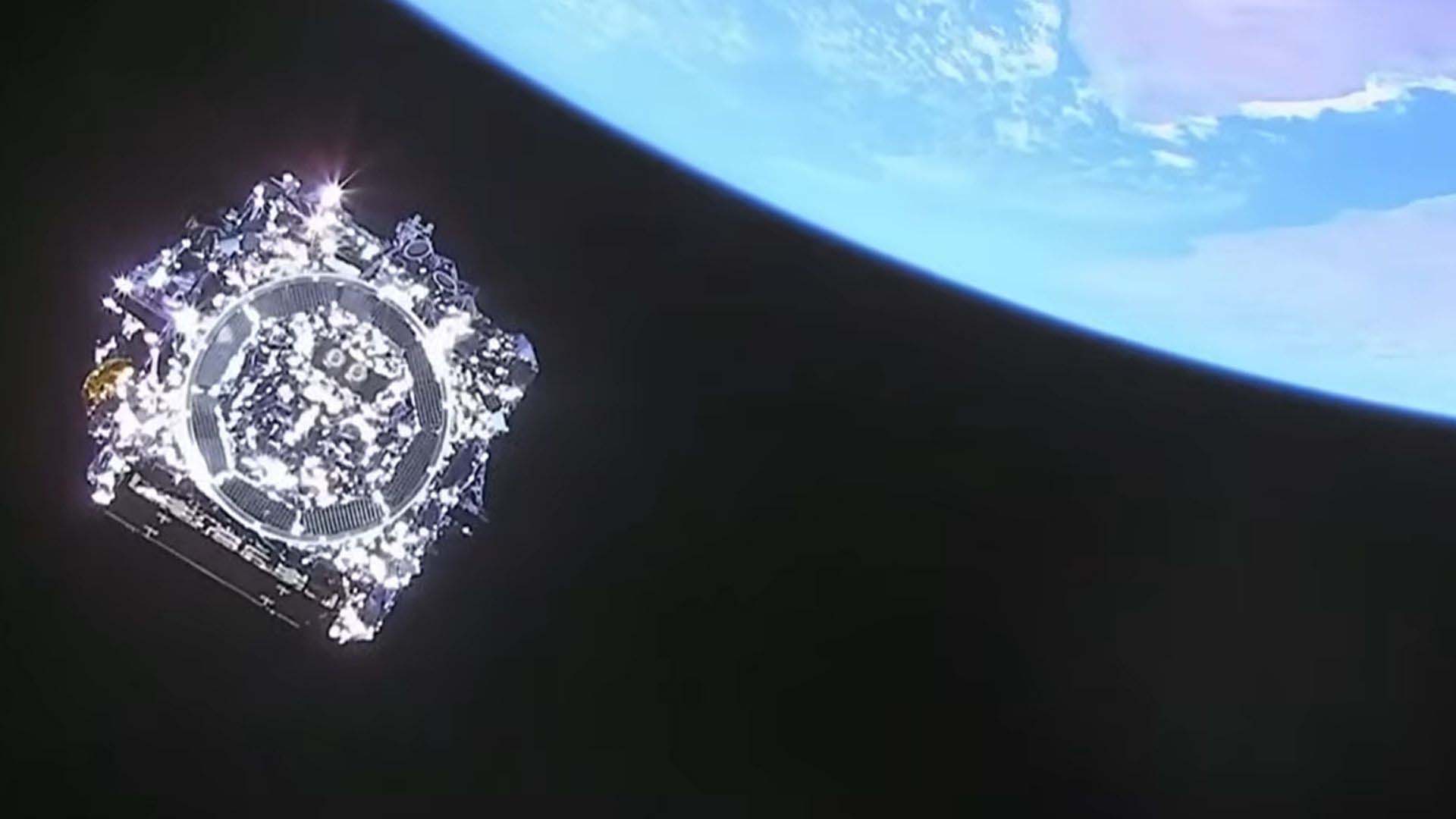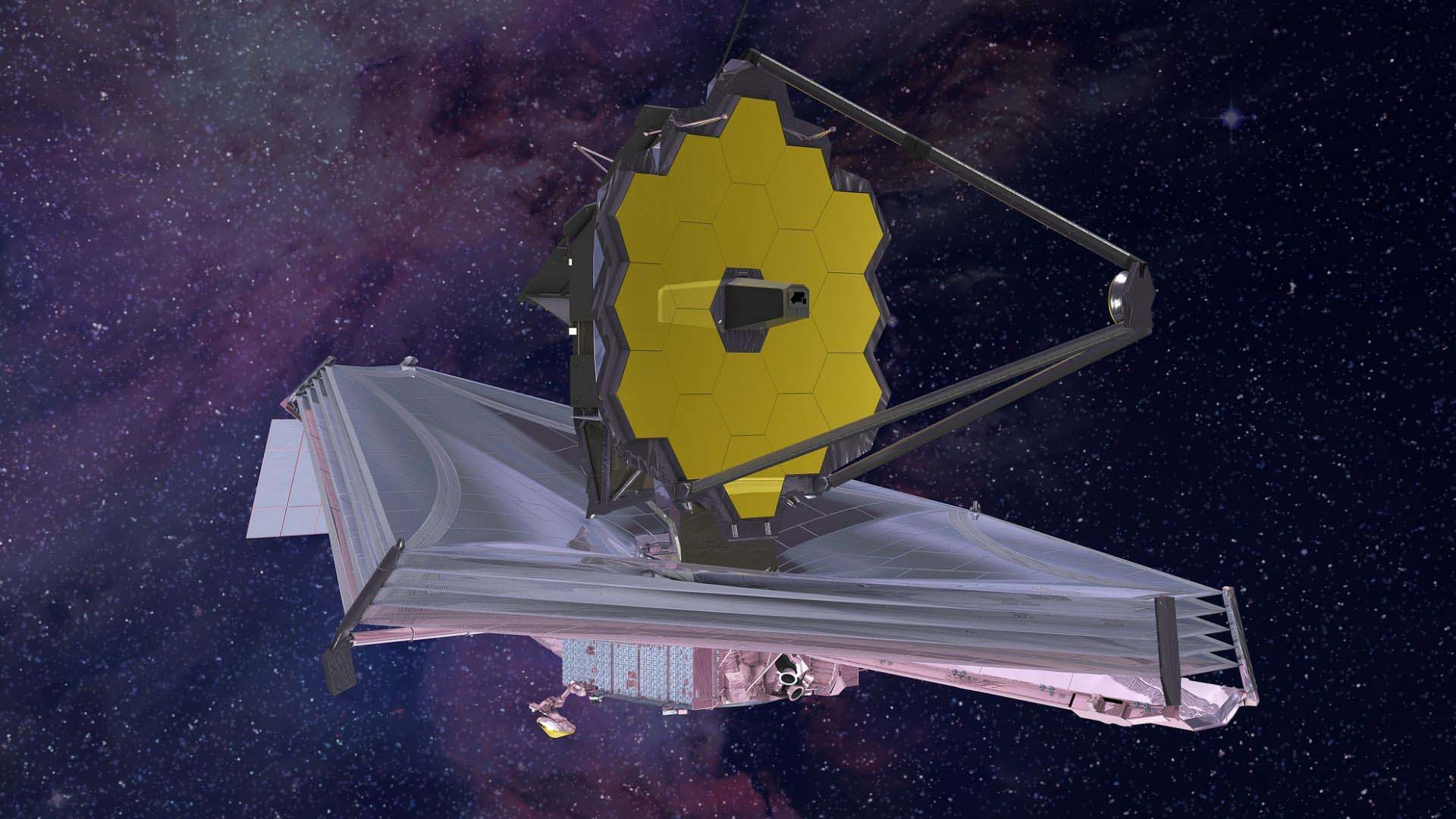On January 8, 2022, arguably humankind’s greatest engineering achievement came to fruition about a half a million miles behind our planet. After 20 years in development, $10 billion spent, and 14 nail-biting days of exquisite hi-tech origami in space, the James Webb Space Telescope (JWST) was fully deployed.
After successfully launching from the Guiana Space Centre in French Guiana on Christmas Day while folded-up in the fairing of the Ariane 5 rocket, engineers remotely controlled 50 moving parts and 178 release pins. Everything had to happen correctly, in sequence, to put Webb in its final configuration. It worked.
This Monday, January 24, after a 30-day journey into space, Webb arrives at its final destination. A dream realized? Not yet. This is what happens next.
What is Webb?
Webb is the biggest and the most advanced space observatory ever constructed. About 100 times more powerful than Hubble, Webb is the size of a 70-foot tennis court. Its massive 21.6-foot primary mirror (to Hubble’s 8-foot primary mirror) is made from super-strong beryllium and comprises 18 hexagonal segments.
All telescopes are time machines...Every photon Webb will detect is old light, but since it’s an infrared telescope it will detect the very oldest, most ancient light.
Each segment is covered in gold, which is perfect for reflecting infrared light. And that’s the main difference between Webb and Hubble. Unlike Hubble, which looks at the universe in visible and ultraviolet light, Webb captures ancient, stretched infrared light. That, coupled with its larger mirror, means it can look further back in time than astronomers have ever been able to do before.

Will Webb really look back in time?
All telescopes are time machines. The light from every single star you see is old and has travelled very far to reach you. Even the Sun’s light is 8 minutes and 20 seconds old. The brightest star in the night sky, Sirius, is 8.6 light-years away. That means its light has travelled for 8.6 years at 186,000 miles per second to reach your eyes.
Every photon Webb will detect is old light, but since it’s an infrared telescope it will detect the very oldest, most ancient light. Infrared light is electromagnetic radiation with wavelengths longer than visible light, so it is imperceptible to the human eye.
The very oldest light in the universe – emitted soon after the Big Bang 13.8 billion years ago, when the first stars and galaxies formed – has been stretched by the expansion of the Universe, so it is deeply red. So red in fact that it falls off the visible light spectrum entirely and into the infrared spectrum.
Webb will be able to study those very first stars and galaxies a few hundred million years after the Big Bang, something no other telescope has been able to do. That is why Webb was built.
Where is Webb?
The Webb telescope is currently here. Although it’s too small and dim to see with the naked eye, look out at night and Webb will be out there. It’s currently in the constellation of Monoceros, slightly east of Orion’s Belt. Webb is always going to be on the night-side of our planet so it can always get a clear view of deep space.
Webb has journeyed a million miles/1.5 million kilometers from Earth to what’s known as the second Lagrange point (L2). This is a very important position in space relative to Earth.
Named after an Italian mathematician, L2 is a point of gravitational balance on the far side of Earth away from the Sun – about four times the distance of the Earth to the Moon – where the gravity of the Earth and Sun combine here to create a relatively stable location.
It’s a place where Webb can keep the Sun, Earth and Moon behind it at all times, aiming its solar panels backwards while its mighty mirror is simultaneously shielded from sunlight by its five tennis court-sized sunshield panels. L2 is also a handy place because it’s close enough to Earth for us to maintain easy communications.
Webb is unlike most space telescopes – Hubble included – that look out at space while orbiting Earth. So while Hubble was famously fixed by Space Shuttle astronauts in 1993 after launching a few years prior with an optical abnormality, Webb is too far away to fix if something goes wrong.
However, it won’t be there alone; the European Space Agency’s Gaia 3D star-mapper is orbiting L2 right now, and the Roman Space Telescope will arrive in 2027.
What will Webb do now?
With the mechanical unfolding of the observatory complete, the engineers got on with aligning the mirrors. Remotely moving each of the 18 primary mirror segments and the secondary mirror out of their launch configuration, they tinkered with the curvature of each mirror segment to set the overall shape of Webb’s primary mirror.
NASA says it could take until April 24 to align the 18 hexagonal gold-covered beryllium segments to create Webb’s primary mirror.
“This telescope is not ready out of the box and the first images are going to be ugly – it’s going to be blurry,” said Jane Rigby, Webb Operations Project Scientist, NASA Goddard Space Flight Center, at a press briefing in January. Engineers will effectively have 18 images that need to be stitched together into one telescopic image.
It’s going to be exacting work. “We start with the mirrors off by millimeters and we're driving them to be aligned to within less than a size of a Coronavirus – to 10s of nanometers,” said Rigby. “It’s a very deliberate process that is time consuming.”
Once that process is over – by mid-March or thereabouts – engineers will take about two months to point Webb at some bright stars to properly collimate and focus the telescope. They will then test and commission Webb’s four main science instruments as they cool down to a temperature of -370 degrees Fahrenheit/-223 degrees Celsius.

NASA says not to expect the first showpiece photos from Webb until about five months after launch, once commissioning ends, which on current timescales is late May.
“We want to make sure that the first images that the world sees do justice to this $10 billion telescope,” said Rigby. She wouldn’t be drawn on exactly what the "wow" images would be of, but expect to see Webb’s deep infrared overlays on classic Hubble images such as the Horsehead Nebula and the Pillars of Creation.
With Webb safely at its destination we can now look forward to a new era in astronomy.
- What’s on the Webb telescope’s 'to do' list?
from TechRadar - All the latest technology news https://ift.tt/3FUcjG9
No comments:
Post a Comment